These Facial Hair Removal Products Give Me Buttery-Smooth, Fuzz-Free Skin
I look forward to the return of my 'stache just so I can use this razor again.
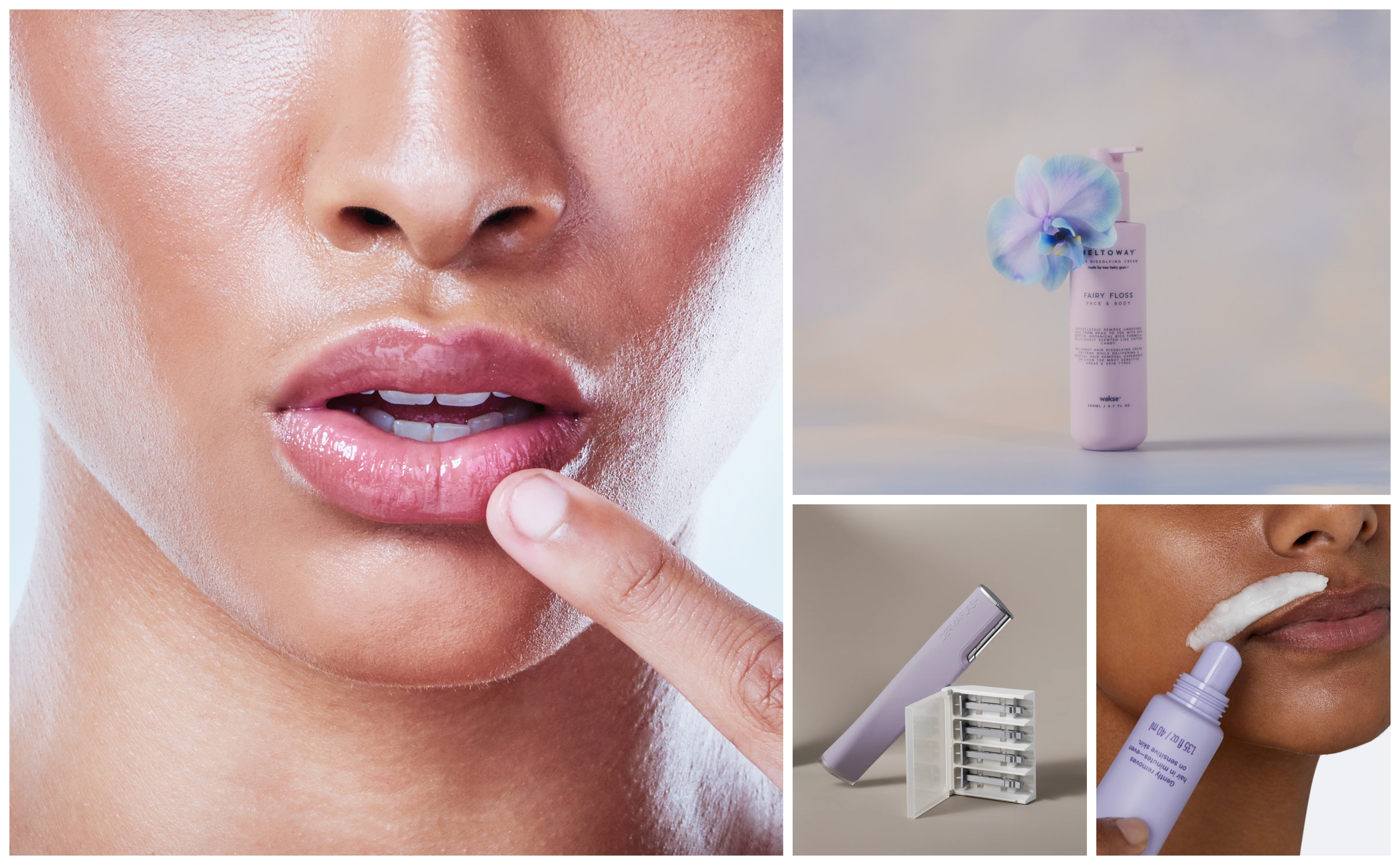

What do Elizabeth Taylor and Eva Mendes have in common? A love for facial hair removal. (Though if you guessed they're both stunners with beauty marks to match—fair!) Before the days of high-def cameras and photo editing, the secret behind Hollywood stars' flawless-looking skin was mostly great genetics, and, in part, the removal of peach fuzz. Taylor famously shaved her face with a dermaplane razor back in the '50s, and today, Mendes still uses the same technique.
And while we may not all be Hollywood icons, we can borrow their tricks in the quest for smoother, softer skin. Facial hair removal isn't just limited to a dermaplane (or the same razor you use on your legs)—in fact, there are a multitude of options available on today's market. Think: dedicated facial razors, tweezers, wax strips, hair-removal creams, and high-tech devices all ready to tackle that rogue chin hair that showed up with your Saturn return and never left.
Of course, removing facial hair is never a necessity—it's right up there with the rest of body hair removal: totally optional. But I find that the process gives me a smoother base for makeup, helps exfoliate dead skin so my products absorb better, and leaves my complexion feeling buttery-soft.
"You can remove facial hair by tweezing, waxing, threading, shaving, lasering, and using creams," says Director of Dermatology at Plastic Surgery & Dermatology of New York, Jody Levine, MD. These all fall into three main categories: physical hair removal (like waxing, shaving, or tweezing), chemical removal (like hair removal creams), or electric devices (like trimmers or lasers).
Ahead, the 12 best facial hair removal products on the market, reviewed by experts—plus tips on the safest techniques for removing hair so you can keep your skin smooth, happy, and fuzz-free.
The Best Facial Hair Removal Tools
- The Best Facial Hair Tweezer: Tweezerman Stainless Steel Slant Tweezers
- The Best Facial Wax Strip Set: Athena Club Wax Strip Kit for Face
- The Best Dermaplane for Facial Hair Removal: Dermaflash Luxe+
- The Best Facial Hair Removal Cream: Wakse Meltoway Hair Dissolving Cream
- The Best IPL Device For Facial Hair Removal: Silk'n 7
Manual Facial Hair Removal Tools
Although shaving or plucking via a razor or tweezers is usually the entry point for facial hair removal, it's not without risks, says board-certified dermatologic surgeon Dendy Engelman, MD. A bad tweeze job, like a bad wax job, can compromise the epidermis and weaken the skin barrier, Engelman adds.
Still, there's nothing wrong with picking up a tweezer to snag a few quick eyebrow hairs or a random chin hair once in a while. Face razors, meanwhile, are a great at-home choice for removing vellus hair, aka peach fuzz, around your face. (If you're looking to get in on the dermaplaning game, you can find Marie Claire's picks for the best dermaplaning tools here, or keep reading for our top electric dermaplane tool.)

Sure, it's easy to run to the drugstore and grab any old tweezer—you likely have a couple of old ones lying around your house right now—but in my opinion, there's nothing like a Tweezerman. Designed with a 25-degree slanted tip (a magical angle for working against the brow bone), this baby is available in any color you could imagine and grasps firmly on even the finest of hairs (grip, pull, goodbye).
What I Love: Great grip and pressure; Precise; Easy to target specific hair; Stainless steel is durable, so they'll last you a long time (Tweezerman also offers a free sharpening program)
What I Don’t: More expensive than generic options; If you have a lot of hair to remove, tweezing will take a long time
Hair Removal Method: Epilation
Pain Level: Mild
Reusable: Yes, for years on end
Time Commitment: Immediate results; Timing depends on the amount of hair you have to remove
How Long Results Last: Two to six weeks
Best For: A rogue hair appearing anywhere on your face
Review for MC: “I'll never forget the feeling of getting my first pair of Tweezerman tweezers in, what, high school? They were so pink and so high quality, and a rogue hair hasn't stood a chance ever since. I love how lightweight these feel while remaining sturdy. They're easy to wield—no problem grabbing that one hair you're trying to get—and feel sharp without making me scared I'm going to stab myself in the brow bone or upper lip. There aren't a ton of strands that need plucking on my face, but it comes in handy every time I need it—like when I'm trying to grab the last couple of remaining lip hairs after using a hair removal cream. And yes, it's well worth the price. Hold it, snap it shut, and you'll see why.” — Sophia Vilensky, freelance beauty writer
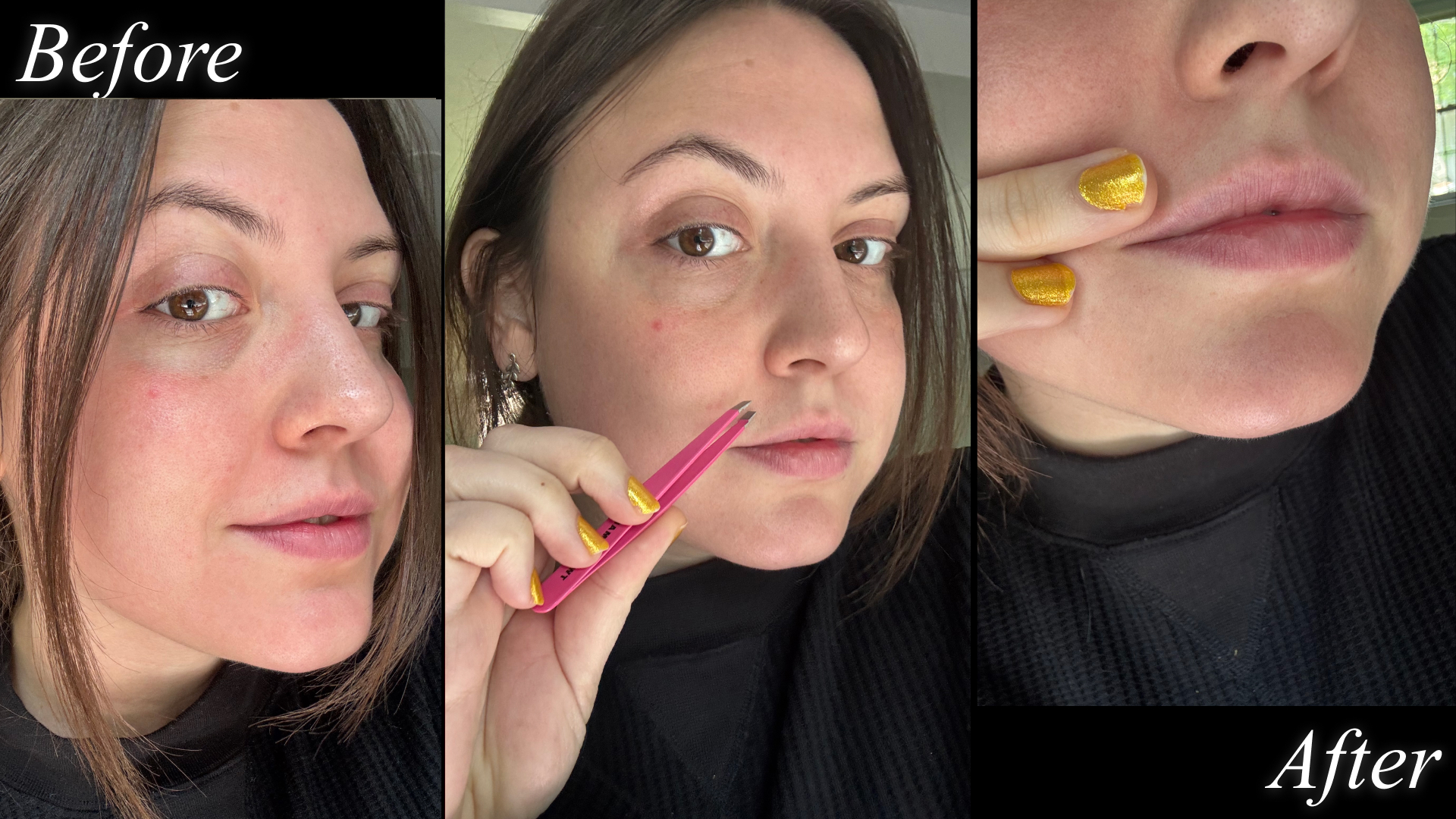
Zoom in to see freelance beauty writer Sophia Vilensky's rogue lip hairs in the first photo. Zoom in on the third to see absolutely nothing, because the Tweezerman got rid of them.
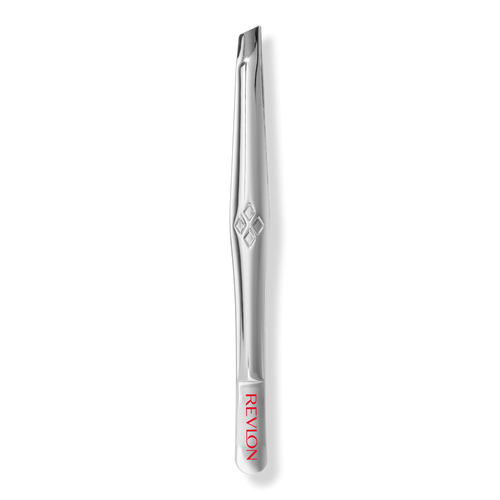
If you don't want to spend upward of $20 on a pair of tweezers, this (under $5!) Revlon drugstore option is a great alternative. Also made of stainless steel—a durable material resistant to rust and easy to clean—they are a pair you know will hold up over time. They're also a little thicker, which makes the tool ergonomic and easy to grab coarse or long hairs.
What I Love: Affordable; Great tension; Expert-approved
What I Don’t: Not quite as sharp or thin as our number one pick, making it more difficult to grab hard-to-reach or fine hairs
Hair Removal Method: Epilation
Pain Level: Mild
Reusable: Yes
Time Commitment: Immediate results; Timing depends on the amount of hair you have to remove
How Long Results Last: Two to six weeks
Best For: Anywhere
Review for MC: “As someone who prefers to let their brows grow as they please (subtle unibrow included), I really only need tweezers for cleaning up a few stray hairs here and there. I’ve had this option from Revlon in my medicine cabinet for a few years now, and they’ve always been a solid, reliable standby. The body's grid pattern makes them easy to hold and control with no slippage, and the slanted slip expertly grabs hairs and plucks them from the root. The tension on them is not only great, but it lasts, too—my OG pair is still going strong!” - Jenna Igneri, Freelance Beauty Writer
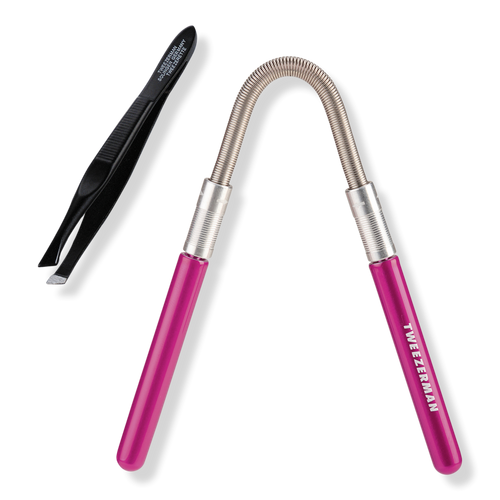
Yeah, Tweezerman is on this list twice—they're good at what they do! If you've seen this little device while out shopping and wondered what it's for, allow me to explain: You simply place the area of hair you want to get rid of between the two coils and pull gently to remove it. However, it's definitely best for clusters of hair—you'll have a hard time going one by one with this.
What I Love: A great choice for tackling multiple hairs at once; Innovative design; Stainless steel is easy to clean
What I Don’t: Not great if you only need one hair gone; There's a learning curve
Hair Removal Method: Epilation
Pain Level: Medium
Reusable: Yes
Time Commitment: Immediate results; Works quickly on larger areas
How Long Results Last: Two to six weeks
Best for: Chin, sideburns, upper lip, brow
Customer Review: "So this is great for removing my facial hair. I get a mustache and pretty significant chin hair...I could literally be the Bearded Lady on this season of American Horror Story (I'm exaggerating, but it's still pretty bad). It IS easy to use...I never read the instructions, and it worked on my first try. Twist it quickly; it will tug on your hair hard, and going fast is the best. It really pulls your hair out at the root and pulls many hairs at once." — Ulta
Wax Strips
Unlike a shave, waxing removes hair from the root, resulting in a non-permanent, but at least a little longer-lasting period of hairlessness. While you can go to your local salon to get your face waxed (professionals are typically the best option to avoid injury or burns), small at-home facial wax strips are also here for you to remove facial hair in a relatively easy way.
Just remember Dr. Engelman's warning: waxing can hurt your skin barrier. Make sure you're following directions, buying quality products, and following the proper aftercare routine—i.e., avoid heat, friction, and sun exposure for the next 24 to 48 hours.

There's no heat required for these convenient and mess-free wax strips, which also come with post-wax wipes and a calming hyaluronic acid serum so you have the whole routine at your fingertips. Designed with a plant-based glyceryl rosinate wax to grab even the shortest hairs, this wax strip removes hair from the root for up to 28 days.
What I Love: Sensitive skin-friendly; Package contains everything you need; Easy to use; You can cut the strips if you want to use them on a smaller section of your face
What I Don't: Skin is a little red after use; The rectangular shape is a little iffy for use underneath your brows without cutting
Hair Removal Method: Epilation
Pain Level: Medium
Reusable: Wax strips are not reusable
Time Commitment: Immediate results; Works quickly on larger areas
How Long Results Last: Up to 4 weeks
Best For: Eyebrows, upper lip, chin, peach fuzz
Review for MC: "I am not a confident DIY-er when it comes to beauty treatments. It's hard to weigh risk versus reward when I can just bop over to my salon and have an expert take a look for me. And yet, there's a problem that's presented itself time and time again when it comes to my eyebrows: one is half blonde and, though it's hard to see, much more wild than the other. I couldn't believe how easy it was to use Athena Club's facial wax strip kit. After cutting a strip to size, I applied it under my brow in the direction of hair growth, smoothed it down, and gave it a nice rip. The hairs were gone, and after a little swipe with an oiled aftercare wipe, my brow bone was smooth and hairless. The redness lasted maybe five minutes, but my brow shaping life is changed forever." — Sophia Vilensky, Freelance Beauty Writer
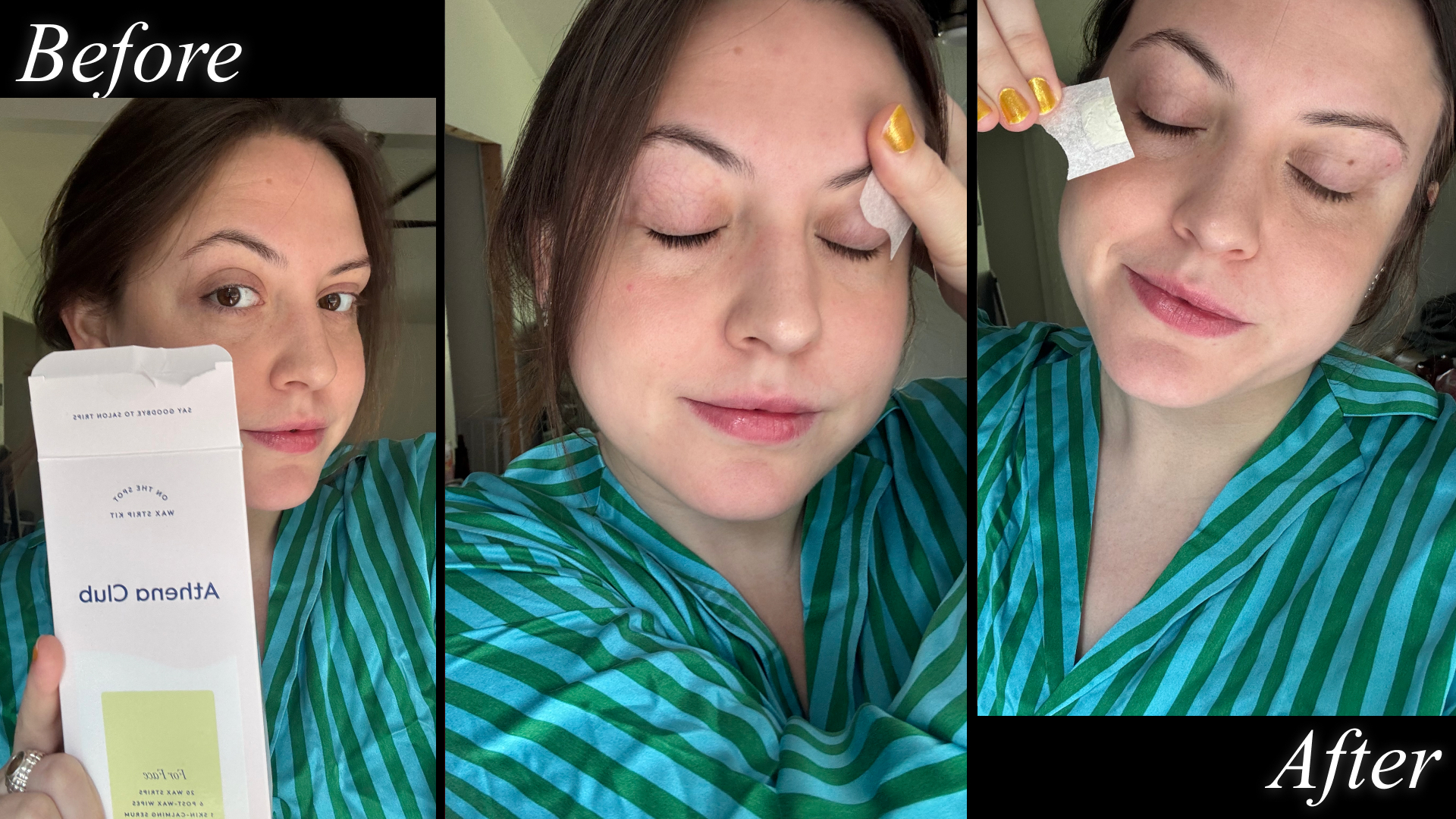
Freelance beauty writer tried out Athena Club's facial wax kit on her blonde-haired right brow and was extremely impressed with the results.

Nad's is a classic choice in the world of facial hair removal that boasts a simple set of instructions: "just rub, peel, and go!" Created for waxing your upper lip, chin, and peach fuzz, these small and flexible strips are made with shea butter to help moisturize skin. Pro tip: Warm them between your hands for the best results.
What I Love: Hypoallergenic; Affordable; Includes post-wax calming oil wipes; You can cut the strips if you want to use them on a smaller section of your face
What I Don't: Some customers report irritation (be careful and read directions thoroughly)
Hair Removal Method: Epilation
Pain Level: Medium
Reusable: Wax strips are not reusable
Time Commitment: Immediate results; Works quickly on larger areas
How Long Results Last: Three to six weeks
Best For: Eyebrows, upper lip, chin, peach fuzz
Customer Review: "I was nervous to try this because waxing always makes my mustache skin freak out for 24 hours. I am so happy to see that this comes with the pre-wax powder (so the wax does not pull your skin!). I heated up the wax strip with my hairdryer on high, split the strips, applied, pressed down four times, and pulled them. I think the after-wax wipes helped a lot to prevent the post-wax rash. I have not waxed myself for a while, and this is a game-changer. No more going to the waxing salon for me!" — Target
Hair Removal Creams
I remember the first time I heard about Nair when I was little; I thought it was magic. While I now understand the science behind hair removal creams (also known as depilatory creams, their chemicals break down disulfide bonds in the hair's keratin proteins) it's still a little wild to me—all you have to do is apply smoothly, leave on for a few minutes, and wipe away with warm water.
Specially created for the face, the following creams are meant to cause less irritation and feature a fainter scent than their leggy predecessors.
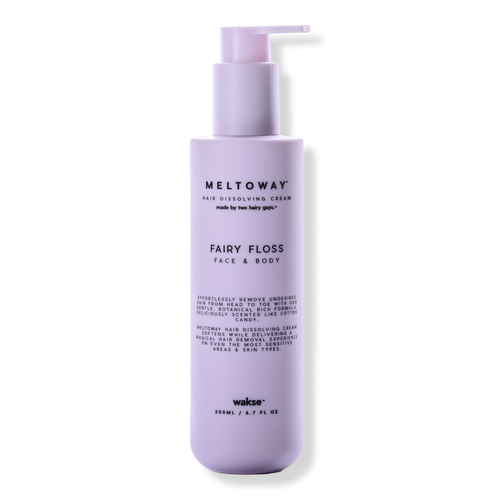
New to the hair removal scene, Wakse's "sensorial" Meltoway Hair Dissolving Cream is already selling out at Ulta. Gentle yet effective, you can use it on the face and body. Plus, enjoy fun scents like fairy floss (that's essentially cotton candy), guava, and mango. "If this scent were in a body cream, I'd be wearing it all day," wrote one reviewer—did you ever think you'd hear that about a hair removal cream?
What I Love: Extremely easy to use; Nice scents; Skin is left soft; No learning curve; No pain; Large bottle
What I Don't: More expensive than other options; Hair grows back quickly; Takes a bit of trial and error to find the perfect amount of time to leave on; Not great for coarser hair
Hair Removal Method: Depilatory cream
Pain Level: None
Reusable: Your bottle will last you a long time, especially if you're tackling smaller areas
Time Commitment: Immediate results; The entire process takes around five minutes
How Long Results Last: A few days
Best For: Chin, upper lip, and sideburns—just don't get it in your eyes
Review for MC: "Baby's first hair removal cream won't be baby's last hair removal cream; I loved how quickly this made my upper lip hair disappear. Truth be told, a couple of darker hairs stuck around—probably an error on my part for not leaving it on long enough. But they were easy enough to pluck and only stood out because everything surrounding them was so smooth and hairless. As far as the scent goes, the milk and honey is lovely—they all are! But there's no perfection when it comes to these creams—the chemical reactions can be stinky; that's just the way of the world." — Sophia Vilensky, Freelance Beauty Writer
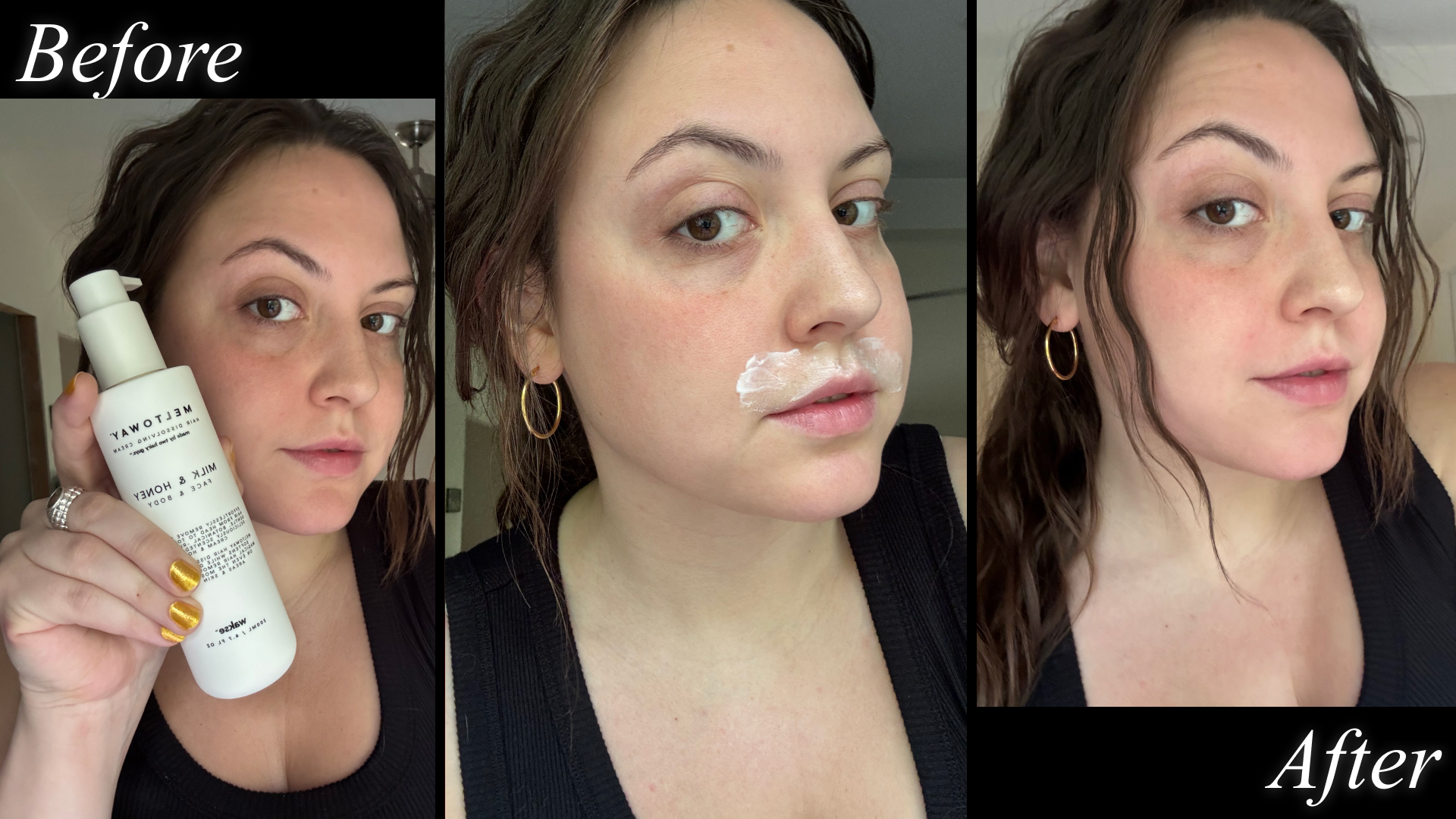
Sophia Vilensky before, during, and after using uses Wakse Meltoway Hair Dissolving in Milk & Honey.
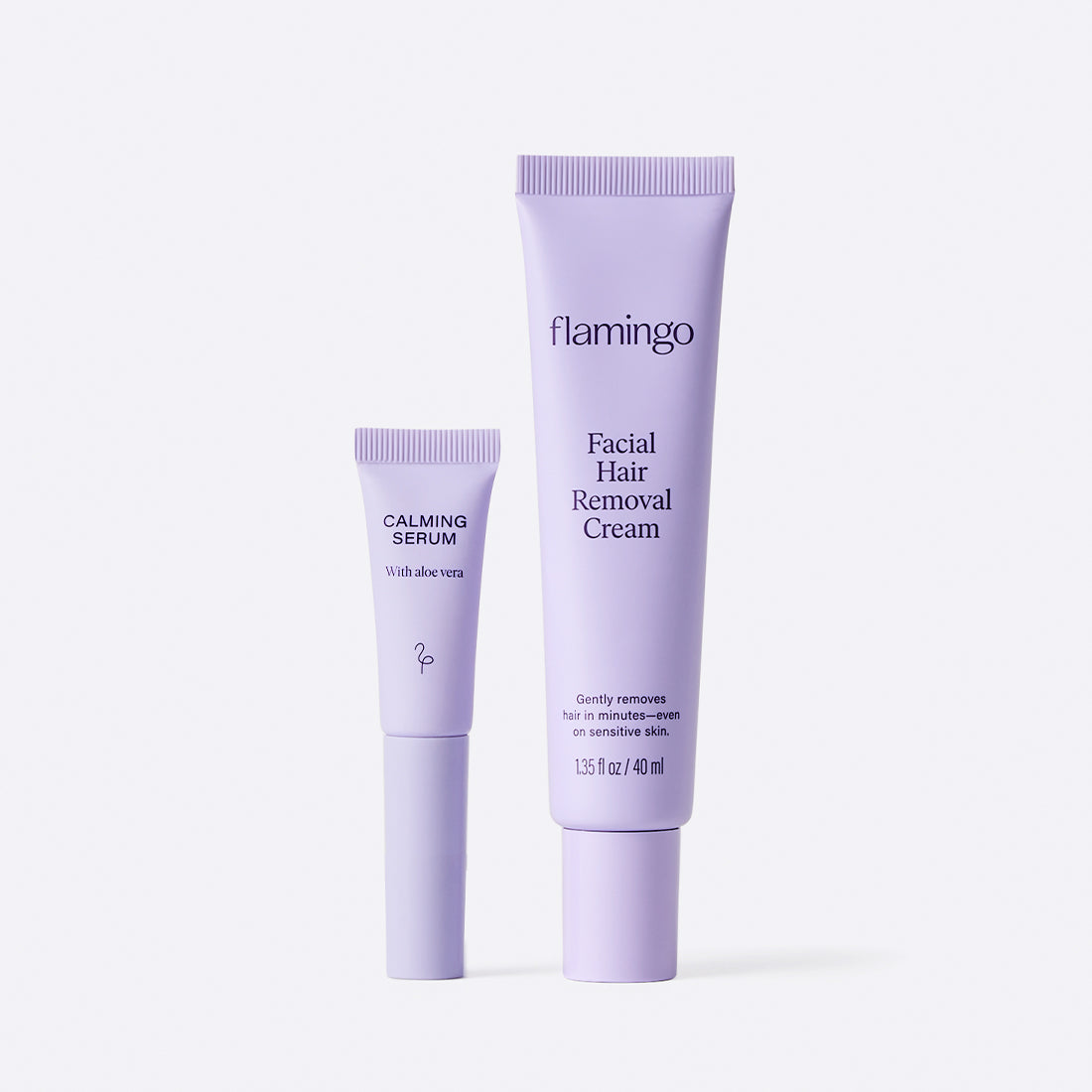
Like the aforementioned Athena Club, Flamingo has cemented itself as a go-to brand in the world of hair removal—face and body. Their shave collection is stellar, and so is their facial hair removal cream. Dermatologist tested and safe for sensitive skin, it also comes with a calming serum so you can love up your skin after wiping the product (and hair) away.
What I Love: Easy to use; Smells more subtle than similar products; Dermatologist tested; Safe for sensitive skin; Leaves skin smooth
What I Don't: Smell isn't amazing; It's not great for coarser hair; Hair grows back more quickly than other options
Hair Removal Method: Depilatory cream
Pain Level: None
Reusable: Yes
Time Commitment: Immediate results; The entire process takes around ten minutes
How Long Results Last: Up to seven days
Best For: Chin, upper lip, and sideburns—just don't get it in your eyes
Customer Review: "I have always struggled with unwanted chin hair. I’ve waxed, shaved, and plucked my chin for years! But now, I have the perfect solution in my cosmetic bag. I literally apply the product, wipe, and I’m HAIR FREE! And my skin is baby smooth! I’m a customer for life! This product is amazing!" — Flamingo
Handheld Devices and Trimmers
Handheld facial hair removal devices were ultimately made for ease of use, taking tips from the salon (see: the dermaplaning appointment-replacing Dermaflash) or ready for on-the-go removal (you never know when that rogue hair will pop up again). While the general concept is the same as some of the options above, the techy twist can't be ignored.
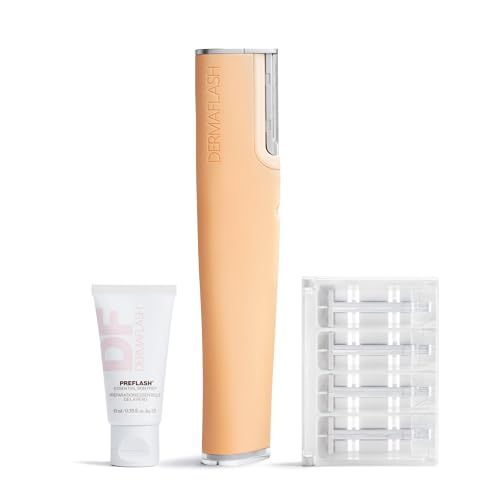
I'm scared to admit this, but after years of telling my esthetician I'd never let anyone else touch my vellus hair, I tried Dermaflash, and loved it. This compact device takes your manual dermaplane razor and flips it on its head. It does this by using 14,000 sonic vibrations every minute to exfoliate dead skin cells while removing peach fuzz, resulting in smooth, absolutely bare skin. It's intended for use on all skin tones and skin types, even sensitive (just do a patch test first).
What I Love: Doesn't hurt; Cordless; Easy to use; Exfoliates; Skin is left smooth; Comes in cute colors; Charges quickly
What I Don't: Expensive; Blades must be replaced
Hair Removal Method: Dermaplaning
Pain Level: None
Reusable: Yes, but you have to purchase replacement blades
Time Commitment: Immediate results; Timing depends on your personal skill level and speed
How Long Results Last: Around four weeks
Best For: Peach fuzz, upper lip
Review for MC: "If, on the rare but not impossible chance that you feel inclined to Google my name, you’ll see this isn’t my first time raving about this gadget. I use it every two weeks for the most satisfying peach-fuzz removal ever, and it’s earned a permanent spot in my bathroom lineup. It’s sturdy, aesthetically pleasing, and the exact opposite of one of those unnecessary beauty tools that end up collecting dust. It leaves my skin smooth, helps my skincare absorb better, and makes my makeup look its absolute best." — Marisa Petrarca, Contributing Beauty Writer
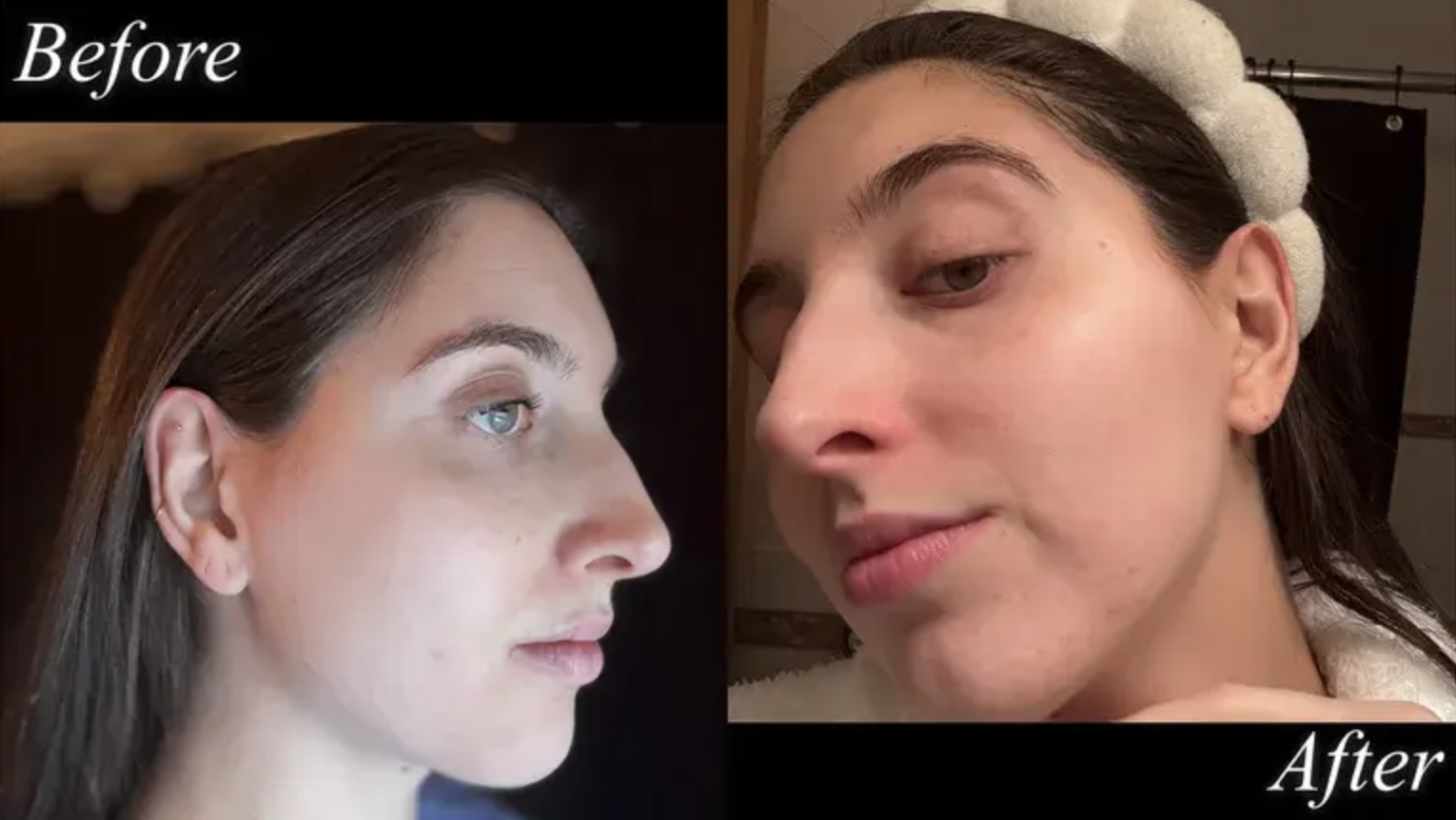
Contributing beauty writer Marisa Petrarca is a big fan of the Dermaflash Luxe+, which she uses regularly to rid her face of peach fuzz.

Cheaper than a high-end lipstick yet shaped exactly the same, Finishing Touch's battery-operated electric shaver can be thrown in your purse for hair removal on the go—it even has a built-in light to assist with accuracy. Designed especially for the face, it's also gentle enough for everyday use. My best friend loves to whip hers out as a party trick. See my lip hair? No, you don't—because I just made it disappear.
What I Love: Affordable; Cordless; Compact; Gentle enough for everyday use
What I Don't: Doesn't work well on thick hair
Hair Removal Method: Electric razor
Pain Level: None
Reusable: Yes
Time Commitment: Immediate results; Works quickly
How Long Results Last: A couple of days
Best For: Peach fuzz, upper lip
Customer Review: "I'm surprised !! This little gadget really does get rid of unwanted fuzz. I've noticed it shaves off fuzz better than thicker hairs. When I emptied the chamber and saw how much fuzz accumulated, that's when I realized this gadget works." — Ulta
IPL Devices
IPL devices, known as intense pulsed light, use flashes of light (you can count on using more than 300 flashes for facial hair removal) to detect and remove pigment from the skin. The big issue with these tools? They have difficulty detecting light hair—red, blonde, and gray included. They also aren't always suitable for dark or deep skin tones. Before using on, ensure that it's safe for your hair and skin color, as the latter can result in burns.
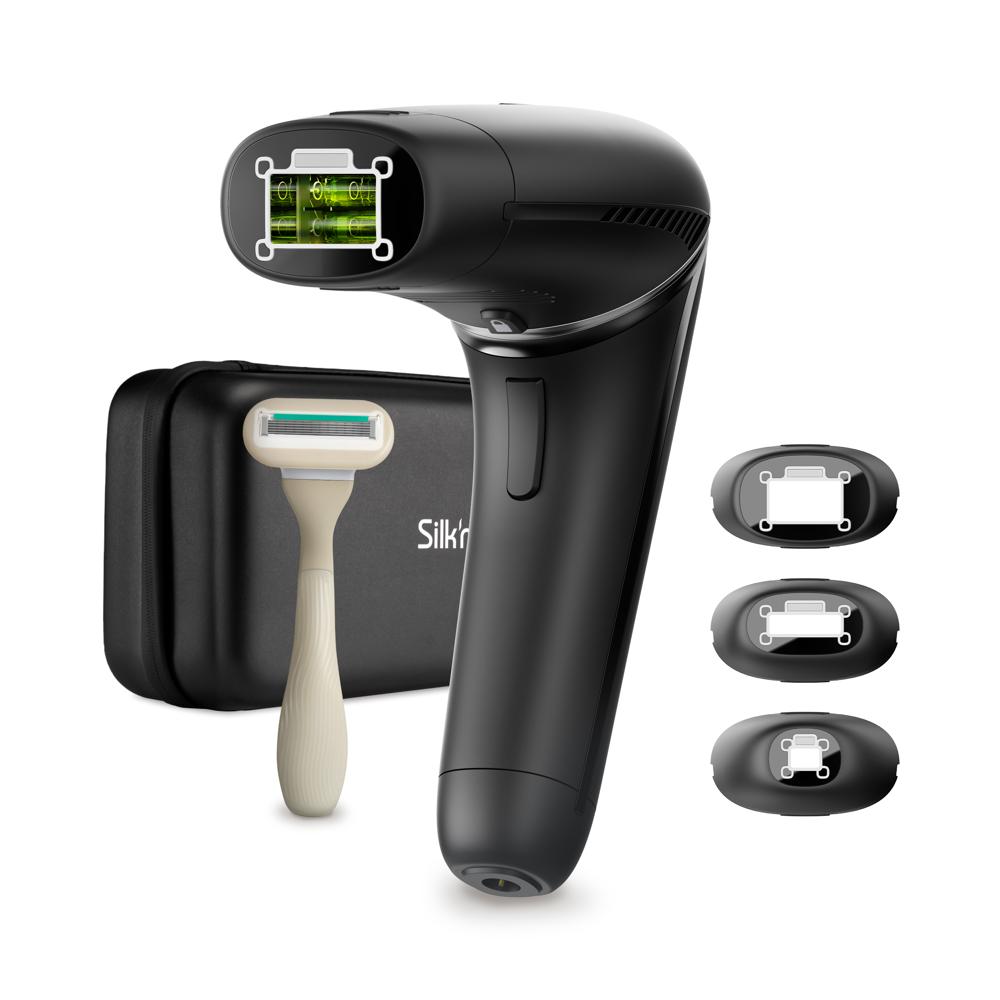
Dr. Engelman is a fan of the brand Silk'n for at-home facial hair removal because their devices are "safe, effective, and pain-free," she says. Featuring a 360-degree rotatable head so you can get every angle, and boasting 92 percent hair reduction (the brand says you’ll need 12 sessions, completed two weeks apart), the Silk'n 7 has a removable head made specifically for your face.
What I Love Fast-working; Expert-approved; The facial hair-specific head is convenient and easy to maneuver
What I Don't: Expensive; Only works on lighter skin tones and dark hair; Takes a while to see results
Hair Removal Method: IPL
Pain Level: Mild
Reusable: Yes
Time Commitment: Quick process for small facial areas
How Long Results Last: Super long-lasting, but it will take many sessions to get there
Best For: Long-term hair removal
Review for MC: "As far as timing goes, at-home IPL is never going to be the fastest hair removal method. It’s quick once you get going with the machine, but there’s a bit of learning involved. You have to shave the area you’re trying to treat (Silk'n 7 includes a razor for this purpose, FYI!), make sure you have your shades on, and lock in for multiple sessions over a few months. But then? It’s all worth it. Because though it might not be the fastest, it is the longest-lasting at-home facial hair removal method on this list. Besides the luxurious unboxing experience, I love the Silk’n 7 for its ease of use and smaller, face-ready treatment attachment. Using it isn't scary, which is a bigger deal than you'd think. I can't wait to see the results come in, though I had grown kind of fond of my ever-returning upper lip hairs." — Sophia Vilensky, Freelance Beauty Writer
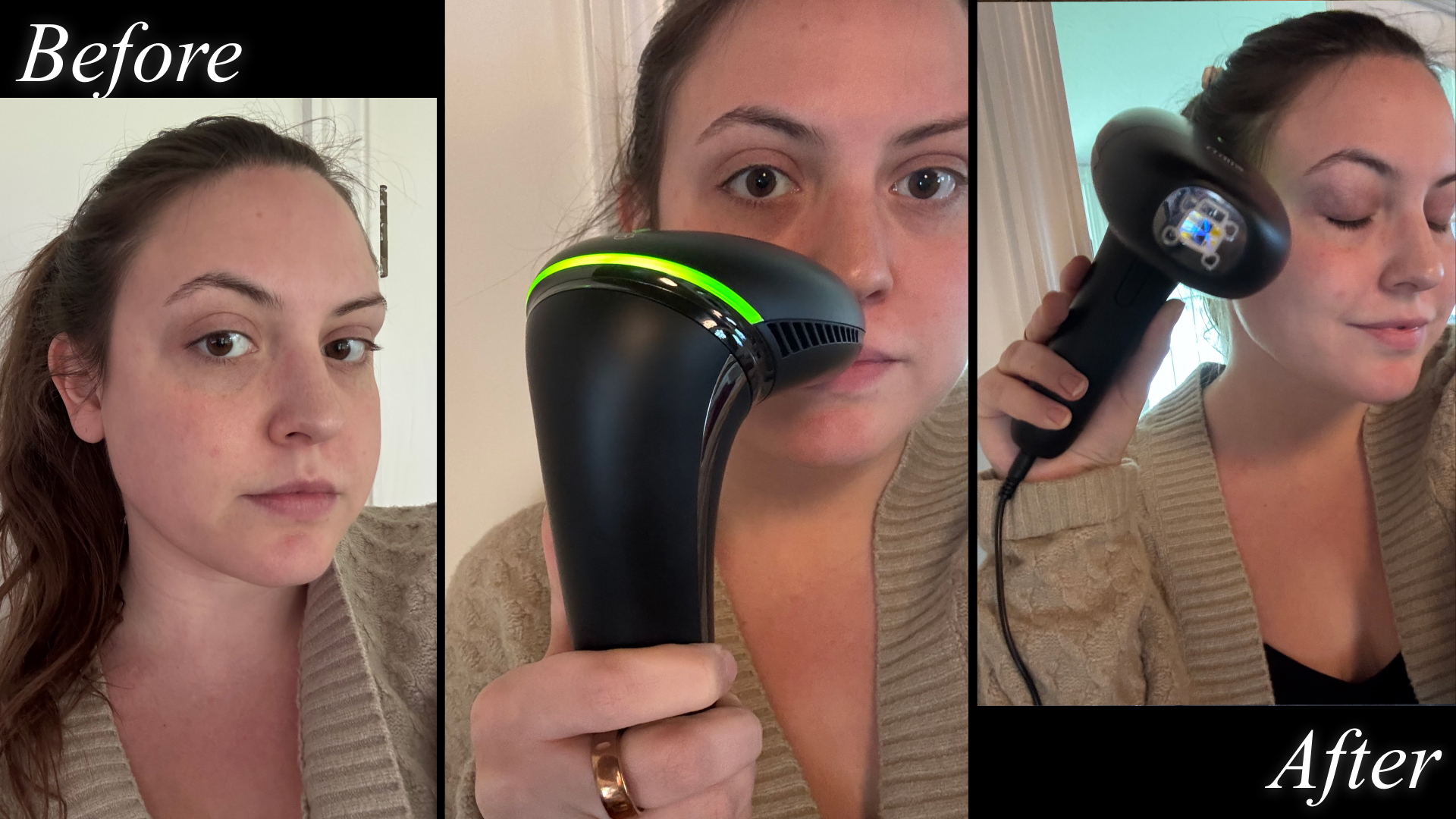
Freelance beauty writer Sophia Vilensky put the Silk'n 7 IPL machine to the test. Don't worry—it's not pulsing in the middle photo. She'd be wearing her sunglasses if it was.
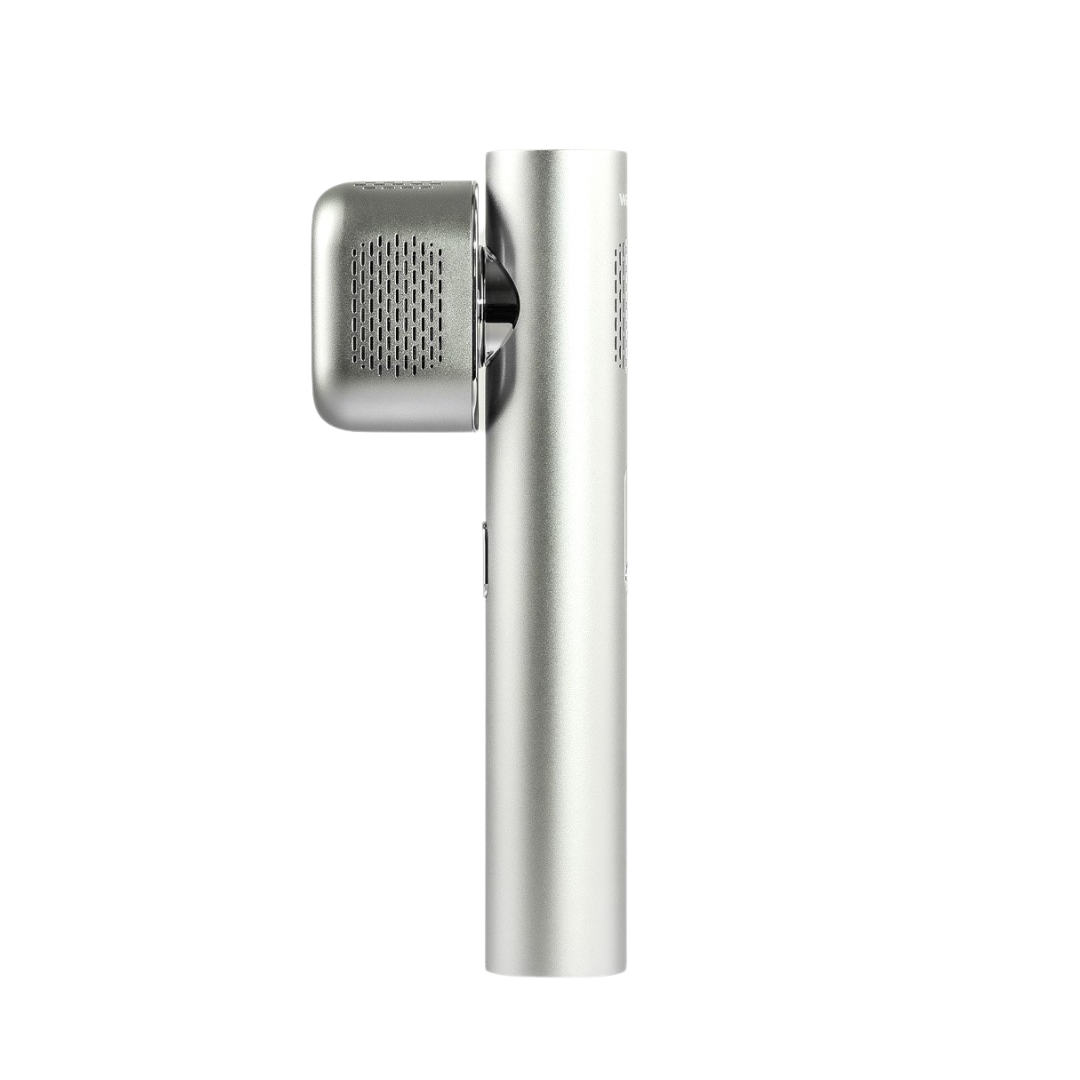
No, Wakse doesn't just make hair removal creams (and waxes, and aftercare products). Their newest, and perhaps most exciting, launch is an IPL machine that is already a fan favorite and uses something called "sapphire crystal cooling technology" to give the skin a cool touch after every pulse, minimizing discomfort and adding a soothing feel to reduce irritation or discomfort.
What I Love: Sleek tool feels nice in your hand and looks nice on your counter; Easy to use; Cooling sensation is helpful for pain management; Rotating head
What I Don't: Expensive; Only works on lighter skin tones and dark hair; Takes a while to see results
Hair Removal Method: IPL
Pain Level: Mild
Reusable: Yes
Time Commitment: Quick process for small facial areas
How Long Results Last: Super long-lasting, but it will take many sessions to get there
Best For: That one chin hair you want gone for good
Review for MC: "Okay...wielding an at-home device that pulses intense light to stop your body hair from growing (after continued use!) is a little scary. But Wakse has a way of making me feel okay about the situation. Cool to the touch and cool to the skin after blasting you, the Sapphire IPL is nice to hold and so easy to use. So far, I'm impressed, and I'm even more excited to see where things are after a few months of regular use." — Sophia Vilensky, Freelance Beauty Writer
Professional Laser Hair Removal

A Sciton Bareit laser hair removal session in the works.
Laser hair removal has long been regarded as the best form of facial hair removal if you're looking for long-lasting results. And no, it's not the same technology as IPL, which many at-home laser hair removal options utilize. Instead, professional laser systems are used under the direction of a healthcare provider and are engineered to deliver more powerful results.
"Hair grows in cycles, and therefore, each session of laser hair removal will target only hairs in the anagen phase of hair growth. This is why it is necessary to do multiple treatments over time," says nurse practitioner Loretta Nguyen Zanetti at Erasable Med Spa. While there are plenty of highly effective lasers available today, in her practice, Zanetti uses a machine called Sciton's Bareit, which uses light energy to target the root of hair deep in the follicle. "The melanin from the hair at the root absorbs the heat, and it essentially renders the follicle unable to produce more hair."
What to Look For in a Facial Hair Removal Tool
Not all facial hair removal options are created equally; some can help the hair go away for good, while others offer only a temporary fix. "Hair may grow back quicker with some methods (such as shaving) because the hair is removed superficially, while laser targets the root of the hair follicle, leading to longer-lasting results," shares Dr. Levine.
"At-home options typically offer temporary solutions versus long-term results. Devices that are designed for at-home use are usually underpowered and require hours of use to get minimal results," says Zanetti.
Does Facial Hair Removal Hurt?
The short answer is that it varies. It depends on the tool you use (tweezing a single hair is a lot easier than ripping off a wax strip) and your pain tolerance.
In terms of laser hair removal, "each pulse of the laser feels like a tiny pinch with a bit of heat," notes Zanetti. "Most find it very tolerable, and in cases of very sensitive areas like the bikini area, a topical anesthetic can be used."
Facial Hair Removal Aftercare
After hair removal, the skin can become dry or irritated, even if you follow the directions. (This is especially applicable to those with sensitive skin types.) To protect that fresh layer of skin, stay clear of heat, sun exposure, and harsh products for the next 24 to 48 hours. If you're instructed to apply a calming moisturizer or barrier-supporting ointment, it's best to stick to fragrance-free options.
It's also important to prep for removal the right way. Make sure your skin is cleansed before pulling out your razor, and put the chore off if you're sunburnt or irritated in any way. If you have a skincare condition like eczema, psoriasis, or dermatitis, stay clear of hair removal altogether and consult a licensed doctor or dermatologist.
Is My Facial Hair Normal?
In most cases, it's common for women to have a layer of fine, light hair—often referred to as peach fuzz. If you begin to develop thicker, coarser hair on your face, pay attention. "Some facial hair growth is normal, but if it increases drastically within a few months, you may have an underlying condition that requires medical treatment beyond hair removal," says Dr. Levine.
Though genetics and factors like age can play into this, it can also be a symptom of PCOS, like hirsutism. At the end of the day, don't diagnose yourself; see a doctor to address your facial hair like a pro.
Why Trust Marie Claire
For more than 30 years, Marie Claire has been an internationally recognized destination for news, fashion and beauty trends, investigative packages, and more. When it comes to the products Marie Claire recommends, we take your faith in us seriously. Every product that we feature comes personally recommended by a Marie Claire writer or editor, or by an expert we’ve spoken to firsthand.
How We Tested
The facial hair removal tool testing process included both long-time editor favorites and new discoveries. We tapped the Marie Claire team to share which facial hair removal products they use in their daily lives, then spoke to professionals to learn about their favorites and product use tips.
The MC team used tools on their own face, evaluated each product on ease of use, comfort, and overall performance. They also assessed packaging, accessibility, and safety. The resulting pool includes 12 of the best facial hair removal products on the market across various categories.
Meet The Experts

Dr. Dendy Engelman is a board certified dermatologic surgeon at Shafer Clinic Fifth Avenue. Dr. Engelman attended Wofford College in South Carolina and was inducted into Phi Beta Kappa and graduated summa cum laude. Following medical school, Dr. Engelman completed her internship in Internal Medicine at the Mount Sinai Medical Center in Manhattan. In addition to a dermatology residency at the Medical University of South Carolina, Dr. Engelman completed a one-year fellowship in Mohs and dermatologic surgery, lasers, liposuction and vein treatments.
Most recently, Dr. Engelman was appointed Director of Dermatologic Surgery at New York Medical College where she oversees the training of future Mohs surgeons and dermatologists. She is a fellow of the American Academy of Dermatology, American Society of Dermatologic Surgery and American College of Mohs Surgery.

One of America’s top dermatologists, Dr. Jody Alpert Levine is the Director of Dermatology at Plastic Surgery & Dermatology of NYC, a leading medical and aesthetic practice in New York City.
Dr. Levine is an expert in dermatology and dermatologic surgery, specializing in medical and surgical pediatric dermatology, as well as adult cosmetic dermatology and laser surgery. With an intuitive eye and deft touch, Dr. Levine helps patients achieve the most beautiful and natural-looking results. Her exceptional talent with lasers, BOTOX®, cosmetic injectables, surgery, liposuction, hair transplant, and cosmeceuticals has created a wait-list of patients from around the world who trust only her handiwork.

Loretta Nguyen Zanetti was born the youngest of ten children shortly after her parents immigrated to the United States following the Vietnam War.
She joined the US Army as a surgical technician. She graduated from Columbus State University in Georgia with a Bachelor’s of Science in Nursing, followed by Western University of Health Sciences in California with a Master’s of Science in Nursing.
Loretta has served in the Army for over 15 years as a military officer and currently holds Lieutenant Colonel.
Building on her experience and leveraging her skills as an advanced registered nurse practitioner and certified laser specialist, Loretta is proud to help her clients achieve their aesthetic goals. To date, she has performed thousands of laser tattoo removals and aesthetic procedures.
She travels across the country as a trainer and speaker on various aesthetic topics.
Get exclusive access to fashion and beauty trends, hot-off-the-press celebrity news, and more.

Sophia Vilensky is a Freelance Beauty Writer at Marie Claire with a beauty, wellness, and entertainment journalism portfolio that includes contributions to Byrdie, Bravo, Teen Vogue, and Us Weekly. Growing up in a family of beauticians—and through her own personal studies—she developed an in-depth understanding of aesthetics, cosmetic product formulation, and beauty treatment development and has also held roles as a senior copywriter, content strategist, and proofreader for top beauty and wellness brands. Even so, you'd be hard pressed to find her with her hair and makeup actually done. Sophia is based in Minneapolis and is a 2019 graduate of the University of Minnesota, where she majored in English and minored in cinema studies. During her time at the university, she was the Arts & Entertainment Editor for the Minnesota Daily, earning the 2019 Editor of the Year award for her work. She connected deeply with the Twin Cities arts scene, collaborating with leading beauty professionals, designers, and artists. Graduating Summa Cum Laude, her thesis—a close-reading of Vanderpump Rules—was featured on NPR. When not immersed in writing or testing new products, Sophia enjoys watching reality TV, reading, and exploring the newest woo-woo wellness trends. Keep up with her on Instagram @sophiavilensky.